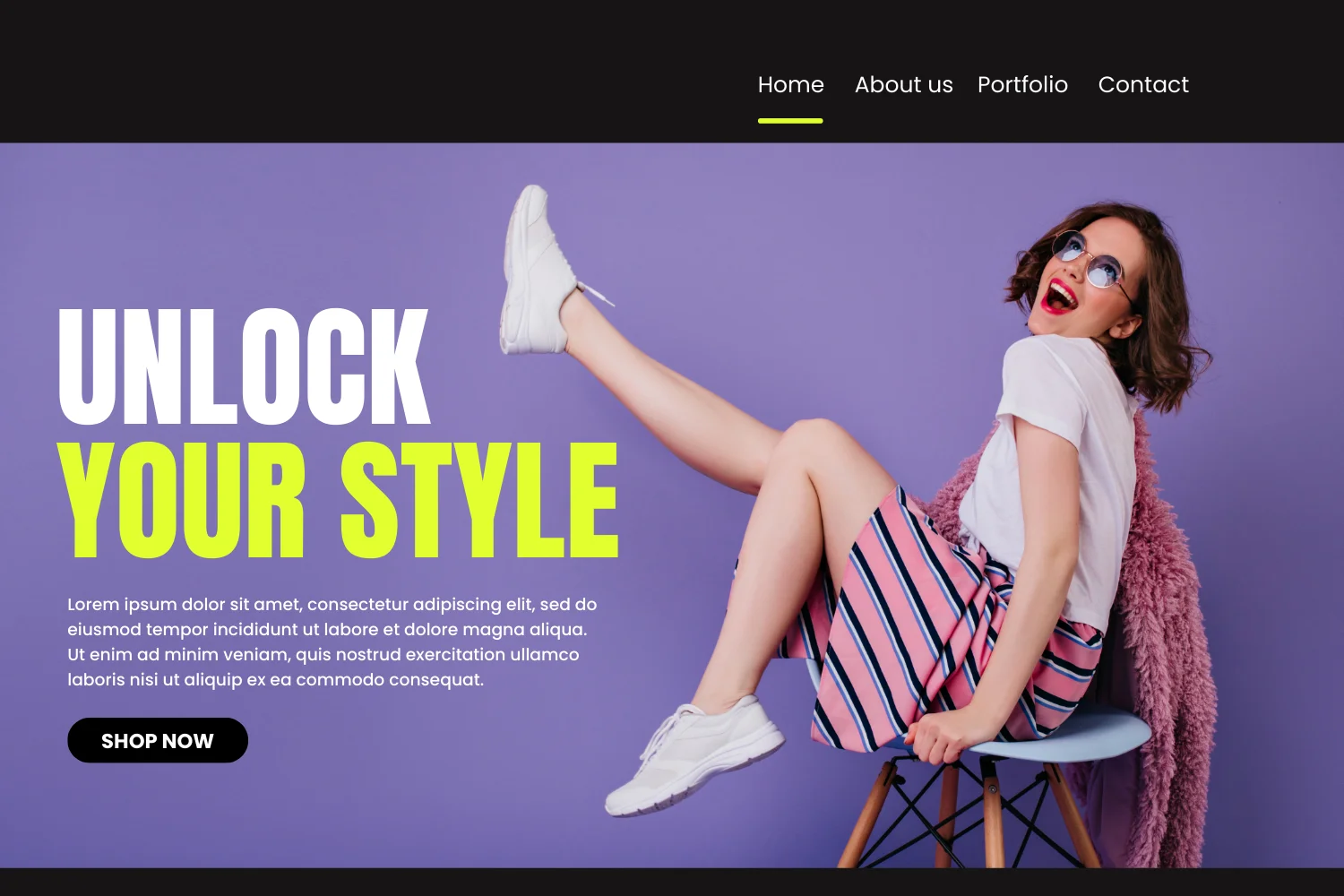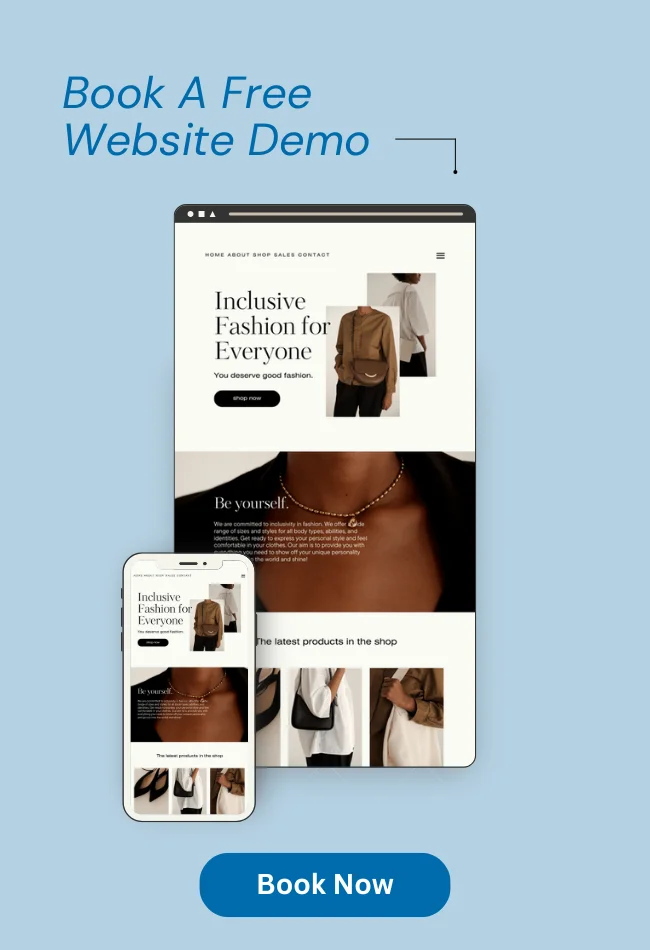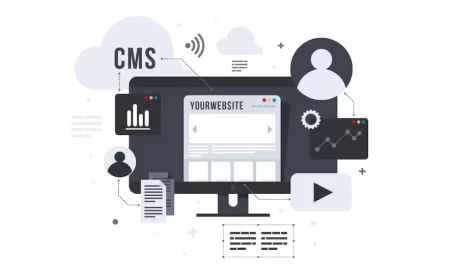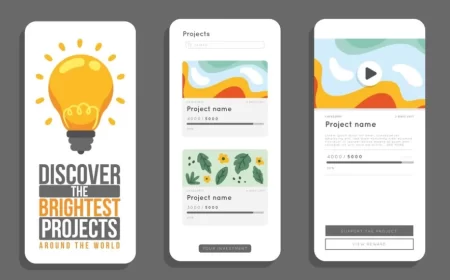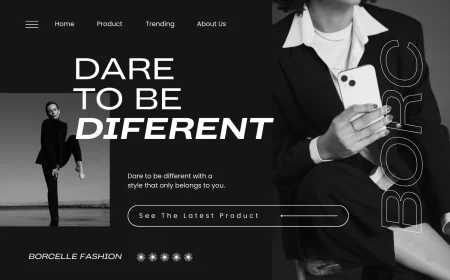In the bustling digital marketplace, where attention spans are fleeting and choices are overwhelming, a single product website stands out as a beacon of clarity and purpose. Unlike expansive e-commerce stores with vast catalogs, this specialized website design is entirely dedicated to showcasing, explaining, and selling one specific product or a tightly integrated product line. It’s a powerful, focused marketing tool designed to eliminate distractions, build compelling narratives, and drive high conversion rates by guiding visitors directly towards a single, clear objective: purchasing that product.
This comprehensive guide will illuminate the path to creating an impactful single product website. We’ll explore why this focused approach is incredibly effective, delve into the essential features that capture attention and convert visitors into customers, offer strategic content ideas to build desire, and outline best practices for design and usability. We’ll also provide inspiring conceptual examples of what makes a single product website truly excel, helping you to craft an online presence that is as precise and effective as your product itself.
Why a Single Product Website is a Conversion Powerhouse
While multi-product stores have their place, dedicating an entire website to one product offers distinct strategic advantages, especially for new launches, flagship items, or niche offerings:
- Unwavering Focus: Every element on the page is designed to highlight the single product, eliminating distractions and keeping the visitor’s attention firmly on the offering. This clarity directly translates to higher engagement.
- Clear Value Proposition: It allows for an in-depth exploration of the product’s unique benefits, features, and how it solves a specific problem for the customer, without competing messages.
- Optimized Conversion Path: The entire site is a funnel, meticulously crafted to guide the user from awareness to purchase with minimal friction. Calls-to-action are prominent and singular.
- Stronger Storytelling: With a single focus, you can weave a rich, compelling narrative around the product’s origin, purpose, and the transformation it offers to the user.
- Enhanced Branding: The website becomes an extension of the product’s brand, allowing for a cohesive visual and messaging experience that reinforces its identity.
- Simplified User Experience: Fewer pages and a clear objective make the site easy to navigate and understand, reducing cognitive load for the user.
- Targeted Marketing: All marketing efforts (ads, SEO) can be hyper-focused on driving traffic for that specific product, leading to more qualified leads.
- Faster Loading Times: With less content and fewer complexities, single product websites often load faster, improving user experience and SEO.
Key Features of an Effective Single Product Website
A high-converting single product website is a masterclass in persuasive design and concise communication. Here are the essential features:
- Compelling Hero Section:
- High-Impact Visual: A stunning, high-resolution image or short video of the product in action or a lifestyle shot.
- Clear Headline: A concise, benefit-driven headline that immediately communicates the product’s core value.
- Primary Call-to-Action (CTA): A prominent, contrasting button (e.g., “Buy Now,” “Shop Now,” “Learn More”) placed above the fold.
- Problem/Solution Narrative:
- Identify the Pain Point: Clearly articulate the problem your target audience faces.
- Introduce the Solution: Position your product as the ideal, elegant solution to that problem.
- Key Benefits & Features Section:
- Benefits-Oriented Copy: Focus on what the product does for the user (e.g., “Save time,” “Improve health,” “Boost productivity”), not just its technical specifications.
- Visual Support: Use icons, short videos, or engaging graphics to illustrate each benefit/feature.
- Concise Explanations: Keep descriptions brief and to the point.
- Social Proof (Testimonials & Reviews):
- Authentic Testimonials: Feature quotes from satisfied customers, ideally with their name, photo, and a specific positive outcome.
- Star Ratings: Display average star ratings prominently.
- User-Generated Content (UGC): Showcase photos or videos of real customers using the product.
- High-Quality Product Imagery & Video:
- Multiple Angles: Showcase the product from various perspectives.
- Lifestyle Shots: Show the product being used in real-world scenarios.
- Detail Shots: Highlight craftsmanship, materials, or unique features.
- Product Videos: A short, engaging video demonstrating features, benefits, and emotional connection.
- Pricing & Purchase Options:
- Clear Pricing: Display the price prominently.
- Variations (if any): If there are different colors, sizes, or bundles, make them easy to select.
- Add to Cart/Buy Now Button: The main conversion point, often sticky as the user scrolls.
- Payment Options/Security Badges: Display trusted payment logos (Visa, Mastercard, PayPal) and security badges (SSL, trusted checkout) to build confidence.
- FAQs Section:
- Address common questions about shipping, returns, warranty, usage, and compatibility. This reduces customer service inquiries and builds trust.
- “About the Brand/Story” Section (Optional but Recommended):
- Share the inspiration behind the product, the brand’s mission, or the founder’s story. This builds emotional connection and trust.
- Contact Information:
- Clear ways for customers to get support or ask pre-purchase questions (email, phone, chat).
- Mobile Responsiveness:
- Crucial: The majority of e-commerce traffic is mobile. The site must adapt flawlessly to all screen sizes.
- Search Engine Optimization (SEO):
- Product-Specific Keywords: Optimize for keywords related to your product and its benefits.
- Fast Loading Times: Essential for user experience and search rankings.
- Secure (HTTPS): A basic requirement for e-commerce and trust.
Content Ideas for Your Single Product Website
Every piece of content should reinforce the product’s value and guide the user towards purchase.
- Explainer Video: A concise video demonstrating the product’s function and benefits.
- “How It Works” Diagram/Animation: A visual breakdown of the product’s mechanics or process.
- Comparison Chart: If applicable, a simple chart showing how your product outperforms competitors (focus on benefits, not just features).
- Use Cases/Scenarios: Illustrate different ways the product can be used or different problems it solves.
- Behind-the-Scenes Manufacturing/Design: Show the craftsmanship or thought process behind the product.
- Customer Spotlight: Feature a detailed story of a customer’s positive experience.
- Sustainability/Ethical Sourcing: If relevant, a section detailing the product’s environmental or social impact.
- Warranty & Support Information: Clear details on guarantees and customer service.
- Subscription Options: If applicable, offer recurring purchase options with benefits.
- Bundles/Accessories: Suggest complementary products or bundles to increase average order value.
Best Practices for Design & Usability
The design of a single product website should be clean, intuitive, and highly persuasive.
- Visually Dominant: Let your product imagery and video do the heavy lifting. The design should frame, not overpower, the product.
- Clean & Uncluttered Layout: Use ample white space to draw attention to key elements. Avoid visual noise.
- Clear Visual Hierarchy: Guide the user’s eye through the page, from the main headline and CTA to benefits, testimonials, and pricing.
- Strong, Consistent Branding: Colors, fonts, and imagery should be cohesive and reflect the product’s personality.
- Intuitive Navigation (Minimal): Often, navigation is minimal, perhaps just “Home,” “Shop,” “About,” “FAQ,” and “Contact,” or even just a sticky “Buy Now” button.
- Fast Loading Times: Optimize all media. Use lazy loading for images and videos below the fold.
- Mobile-First Design: Ensure the site is perfectly responsive and easy to navigate and purchase from on smartphones.
- Clear Calls-to-Action: Make your “Buy Now” buttons stand out with contrasting colors and prominent placement.
- Trust Signals: Prominently display security badges, payment logos, and positive reviews.
- Accessibility: Ensure the site is usable by everyone (e.g., proper color contrast, keyboard navigation, alt text for images).
Platforms for Building a Single Product Website
Several platforms are well-suited for creating effective single product websites, offering varying degrees of control and ease of use:
- E-commerce Focused Platforms:
- Shopify: Excellent for e-commerce, offering robust product management, checkout, and marketing features. Many themes are designed for single products or small catalogs.
- WooCommerce (for WordPress): A powerful e-commerce plugin for self-hosted WordPress sites, offering immense flexibility if you’re comfortable with WordPress.
- BigCommerce: Another strong e-commerce platform with scalable features suitable for single products looking to grow.
- Website Builders with E-commerce Capabilities:
- Wix: User-friendly drag-and-drop builder with good e-commerce features. Many templates can be adapted for a single product focus.
- Squarespace: Known for its beautiful, minimalist templates and strong visual presentation, ideal for showcasing a single product elegantly. Their e-commerce features are robust.
- Webflow: Offers unparalleled design freedom and clean code, suitable for designers who want pixel-perfect control and custom animations for a single product showcase. Includes e-commerce.
- Landing Page Builders (for simpler sales pages):
Conceptual Examples of Effective Single Product Websites
Here are 30 conceptual examples illustrating different approaches and features you’d find on leading single product websites, with external links for inspiration on the type of feature or design element:
Focus on Tech & Innovation
- The “Minimalist Gadget Launch”: A sleek, dark-themed site for a new tech gadget, featuring 3D renders that rotate on scroll, highlighting key features with concise text overlays.
- Inspiration: Apple’s product pages are masters of minimalist tech showcases.
- The “Interactive Explainer Device”: A website for a smart home device where users can click on different parts of the product image to reveal animated explanations of its functions.
- Inspiration: Interactive product tours. See Nest’s older product pages for historical context.
- The “Software as a Service (SaaS) Hero”: A clean, vibrant site for a new productivity app, featuring a hero video demonstrating its core functionality and a clear “Try Free” CTA.
- Inspiration: Slack’s homepage or Notion’s homepage.
- The “Wearable Tech Experience”: A visually rich site for a smartwatch or fitness tracker, using lifestyle photography and subtle animations to show the product in various active scenarios.
- Inspiration: Fitbit’s product pages.
- The “Audio Device Immersion”: A website for high-end headphones or speakers, focusing on immersive sound design elements and close-up product photography to convey premium quality.
- Inspiration: Bose‘s or Sony’s audio product pages.
Focus on Beauty & Wellness
- The “Skincare Transformation”: A clean, bright site for a single skincare product, featuring before-and-after photos, scientific explanations of ingredients, and customer testimonials.
- Inspiration: Glossier’s product pages.
- The “Sustainable Beauty Launch”: A website for an eco-friendly beauty product, emphasizing natural ingredients, sustainable packaging, and ethical sourcing through compelling imagery and brand story.
- Inspiration: Allbirds’ sustainability focus or Drunk Elephant’s product pages.
- The “Hair Care Solution”: A site for a specialized shampoo or treatment, highlighting specific hair problems it solves (e.g., frizz, dryness) with visual demonstrations of results.
- Inspiration: Olaplex’s product pages.
- The “Wellness Supplement Story”: A website for a health supplement, focusing on the science behind the ingredients, user benefits, and a clear subscription option.
- Inspiration: Athletic Greens (AG1) or Ritual’s product pages.
- The “Fragrance Experience”: A highly atmospheric site for a new perfume or cologne, using evocative imagery, abstract animations, and sensory language to convey the scent’s essence.
- Inspiration: Luxury fragrance brand websites.
Focus on Food & Beverage
- The “Gourmet Food Product”: A visually appealing site for a specialty food item (e.g., artisanal chocolate, unique coffee blend), featuring mouth-watering photography, recipe ideas, and origin story.
- Inspiration: Godiva Chocolatier‘s or La Colombe Coffee‘s product pages.
- The “Craft Beverage Launch”: A website for a new craft beer, spirit, or non-alcoholic drink, emphasizing its unique ingredients, brewing process, and brand lifestyle through engaging visuals.
- Inspiration: Craft brewery websites or Kin Euphorics.
- The “Meal Kit/Subscription Box”: A site for a single, focused meal kit or snack box, showcasing the convenience, fresh ingredients, and delicious outcomes with vibrant food photography.
- Inspiration: HelloFresh‘s or Blue Apron‘s landing pages.
- The “Healthy Snack Solution”: A website for a specific healthy snack, focusing on nutritional benefits, natural ingredients, and convenience for on-the-go consumption.
- The “Coffee/Tea Blend Story”: A site for a unique coffee bean or tea blend, detailing its sourcing, flavor profile, and brewing recommendations.
- Inspiration: Specialty coffee roaster websites.
Focus on Home Goods & Lifestyle
- The “Ergonomic Furniture Piece”: A website for a single ergonomic chair or desk, featuring detailed 3D models, user testimonials on comfort, and scientific backing for its design.
- Inspiration: Herman Miller‘s or Steelcase‘s product pages.
- The “Smart Home Appliance”: A site for a single innovative appliance (e.g., a smart air purifier, a robotic vacuum), highlighting its convenience, efficiency, and integration with other smart devices.
- Inspiration: Dyson’s product pages.
- The “Sustainable Home Product”: A website for an eco-friendly household item (e.g., reusable cleaning supplies, compost bin), emphasizing environmental benefits and long-term savings.
- Inspiration: Grove Collaborative‘s or Blueland‘s product pages.
- The “Luxury Candle/Home Fragrance”: An atmospheric site for a high-end candle or diffuser, focusing on the sensory experience, unique scent profiles, and elegant packaging.
- Inspiration: Luxury home goods brands like Diptyque.
- The “Pet Product Solution”: A website for a specialized pet food, toy, or grooming product, focusing on pet health benefits, natural ingredients, and happy pet photos.
Focus on Unique & Niche Products
- The “Customizable Art Print/Poster”: A site for a single, customizable art print, allowing users to preview different frames, sizes, and perhaps even personalized text.
- Inspiration: Custom art print shops like Minted.
- The “Innovative Fitness Equipment”: A website for a compact, unique piece of home fitness equipment, featuring workout videos, user progress stories, and scientific benefits.
- The “Specialty Book/Ebook Launch”: A dedicated site for a single book, featuring author interviews, sample chapters, reviews, and direct purchase links.
- Inspiration: Author websites or book landing pages.
- The “Unique Travel Gadget”: A website for a specific travel accessory (e.g., a smart luggage tag, a portable charger), highlighting its convenience and problem-solving capabilities for travelers.
- Inspiration: Travel gear review sites or Away Travel‘s product pages.
- The “Educational Course/Workshop”: A landing page for a single online course or workshop, featuring instructor bios, curriculum highlights, testimonials, and enrollment options.
- Inspiration: Online course platforms like MasterClass or Coursera.
Focus on Subscription & Service-Oriented Products
- The “Coffee Subscription Box”: A site for a single, curated coffee subscription, emphasizing the discovery aspect, bean quality, and convenience of regular delivery.
- Inspiration: Trade Coffee‘s or Blue Bottle Coffee‘s subscription pages.
- The “Software Utility Subscription”: A website for a single software utility (e.g., a password manager, a VPN service), focusing on security, ease of use, and cross-device compatibility.
- The “Curated Fashion Box”: A site for a single, personalized fashion subscription box, highlighting the styling service, unique items, and convenience of curated outfits.
- Inspiration: Stitch Fix‘s or Trunk Club‘s landing pages.
- The “Digital Art/Asset Pack”: A website for a single digital product like a unique font, a 3D model pack, or a set of graphic design templates, showcasing its versatility and creative potential.
- Inspiration: Digital asset marketplaces like Creative Market.
- The “Specialty Cleaning Product”: A website for a highly effective, single-purpose cleaning solution (e.g., a specific stain remover, a unique surface cleaner), featuring before-and-after videos and strong testimonials.
- Inspiration: The Pink Stuff‘s or Force of Nature‘s product pages.
Conclusion
A meticulously designed single product website is a powerful strategic asset in the digital landscape. By embracing a laser-focused approach, it cuts through the noise, allowing you to tell a compelling story, highlight unique value, and guide visitors directly towards a clear conversion goal. From stunning visuals and persuasive copy to seamless purchasing experiences, every element works in harmony to build desire and trust for your singular offering. Investing in this specialized online presence is investing in clarity, conversion, and the undeniable success of your product.
Frequently Asked Questions (FAQs)
Q1: What is the main advantage of a single product website over a full e-commerce store?
The main advantage is laser focus and higher conversion rates. By dedicating the entire website to one product, you eliminate distractions, tell a more compelling and in-depth story, and guide the user directly to a single purchase decision, leading to a more streamlined and effective sales funnel.
Q2: What’s the most important section on a single product website?
The hero section (the top part of the homepage visible without scrolling) is arguably the most important. It needs to immediately capture attention with a high-impact visual, a clear, benefit-driven headline, and a prominent call-to-action to entice visitors to explore further or buy.
Q3: Should I include pricing on a single product website?
Yes, absolutely. Pricing should be clear, prominent, and easy to find. Transparency builds trust and helps qualify leads. If there are variations (e.g., different sizes, colors), make the price update dynamically as options are selected.
Q4: How important are visuals (photos and videos) for a single product website?
Extremely important. Since the website is entirely about one product, high-quality, professional photography and videography are crucial. They allow customers to visualize the product, understand its features, and connect with its aesthetic and emotional benefits. Show the product from multiple angles, in use, and highlight details.
Q5: What kind of Call-to-Action (CTA) should I use?
The primary CTA should be directly related to purchasing, such as “Buy Now,” “Shop Now,” “Add to Cart,” or “Order Now.” For products that require more consideration, “Learn More” or “Discover” can be used as a secondary CTA in the hero section, leading to more detailed information before the purchase CTA appears later on the page.
Q6: Can a single product website be expanded later to include more products?
Yes, it can. Many single product websites are built on scalable e-commerce platforms like Shopify or WooCommerce. While the initial focus is singular, the underlying platform can support additional products or categories if your brand grows and diversifies its offerings in the future.
Q7: How do I handle customer support and FAQs on a single product website?
Dedicate a clear FAQs section to answer common questions about shipping, returns, warranty, and product usage. For direct support, provide easily accessible contact information (email, phone number) and consider integrating a live chat widget for immediate assistance. This reduces customer service burden and builds trust.

